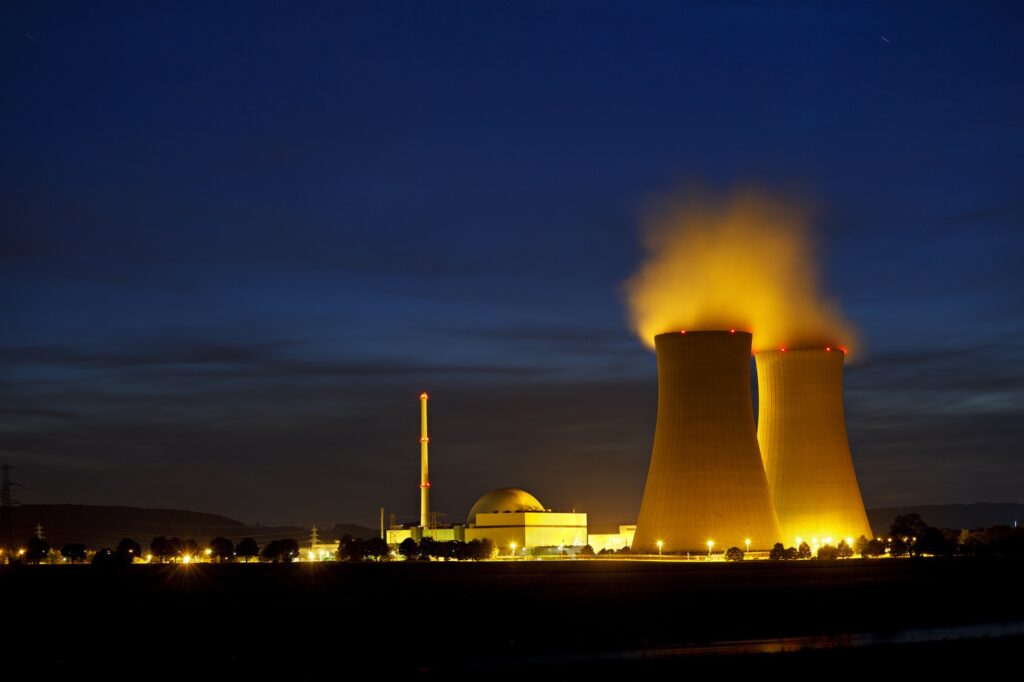We will also discuss some of the implications and recommendations for the stakeholders and actors of the hydrogen energy economy, such as the governments, the industry, the academia, and the civil society.
Why hydrogen?
Hydrogen is a chemical element that can be produced from various sources, such as water, natural gas, biomass, and waste. Hydrogen can be used as a fuel or a feedstock for various applications, such as power generation, heating, mobility, and industry. Hydrogen can also be stored and transported in various forms, such as gas, liquid, or solid.
Hydrogen has several advantages as an energy carrier, such as:
- Zero-carbon: Hydrogen does not emit carbon dioxide or other greenhouse gases when used, unlike fossil fuels. Hydrogen can also be produced from renewable energy sources, such as wind, solar, and hydro, or from fossil fuels with carbon capture and storage, resulting in low or zero carbon emissions.
- Versatile: Hydrogen can be used for various purposes and sectors, such as electricity, heat, transport, and industry. Hydrogen can also be combined with other elements, such as oxygen, nitrogen, or carbon, to produce synthetic fuels or chemicals, such as ammonia, methanol, or synthetic hydrocarbons, that can be used as substitutes for fossil fuels or feedstocks.
- Flexible: Hydrogen can be stored and transported in various ways, such as pipelines, tanks, or carriers, depending on the distance, volume, and cost. Hydrogen can also be converted to and from electricity, using electrolysers or fuel cells, enabling the integration and balancing of intermittent renewable energy sources, such as wind and solar.
How to create a viable hydrogen energy economy?
Creating a viable hydrogen energy economy requires addressing various challenges and opportunities, such as:
- Production: Hydrogen production is the process of extracting hydrogen from various sources, such as water, natural gas, biomass, or waste. Hydrogen production can be classified into three main types, depending on the carbon intensity and the energy source:
- Green hydrogen: Hydrogen produced from water using renewable electricity, such as wind, solar, or hydro, using electrolysers. Green hydrogen has zero carbon emissions and is the most sustainable and desirable form of hydrogen.
- Blue hydrogen: Hydrogen produced from natural gas using steam methane reforming (SMR) or autothermal reforming (ATR), with carbon capture and storage (CCS) or carbon capture and utilization (CCU). Blue hydrogen has low or negative carbon emissions and is the most common and cost-effective form of hydrogen.
- Grey hydrogen: Hydrogen produced from natural gas using SMR or ATR, without CCS or CCU. Grey hydrogen has high carbon emissions and is the least sustainable and desirable form of hydrogen.
- Cost: Hydrogen production is currently more expensive than fossil fuels, especially for green hydrogen, due to the high capital and operational costs of electrolysers, the low utilization rates of renewable electricity, and the lack of economies of scale and learning effects. The cost of hydrogen production is expected to decrease significantly in the future, as the technology matures, the renewable electricity becomes abundant and cheap, and the policy and market incentives increase.
- Scale: Hydrogen production is currently limited by the availability and accessibility of the energy sources, the infrastructure and equipment, and the demand and market. The scale of hydrogen production is expected to increase significantly in the future, as the energy sources diversify and expand, the infrastructure and equipment improve and deploy, and the demand and market grow and develop.
- Distribution: Hydrogen distribution is the process of transporting and storing hydrogen from the production sites to the consumption sites, using various modes and methods, such as:
- Pipelines: Pipelines are the most efficient and cost-effective way of transporting large volumes of hydrogen over long distances, especially for green and blue hydrogen. Pipelines can use existing natural gas networks, with some modifications and blending, or new dedicated hydrogen networks, depending on the hydrogen purity and quality. Pipelines can also store hydrogen underground, using salt caverns, depleted gas fields, or aquifers, depending on the geology and availability.
- Trucks: Trucks are the most flexible and adaptable way of transporting small volumes of hydrogen over short distances, especially for grey hydrogen. Trucks can use compressed or liquefied hydrogen, depending on the pressure and temperature. Trucks can also store hydrogen on-site, using tanks or containers, depending on the space and safety.
- Ships: Ships are the most feasible and potential way of transporting large volumes of hydrogen over long distances, especially for green and blue hydrogen. Ships can use various hydrogen carriers, such as ammonia, methanol, or liquid organic hydrogen carriers (LOHCs), depending on the energy density and conversion efficiency.
- Safety: Hydrogen distribution poses various safety risks and hazards, such as flammability, explosiveness, embrittlement, and leakage, due to the physical and chemical properties of hydrogen, such as low density, high diffusivity, wide flammability range, and high combustion energy. The safety of hydrogen distribution can be ensured by the development and implementation of the safety standards and regulations, the safety equipment and technologies, and the safety education and training.
- Infrastructure: Hydrogen distribution requires various infrastructure and equipment, such as pipelines, trucks, ships, terminals, stations, and storage facilities, depending on the mode and method of distribution. The infrastructure and equipment of hydrogen distribution can be costly and complex, especially for green and blue hydrogen, due to the high capital and operational costs, the low utilization and availability rates, and the lack of interoperability and compatibility.
- Consumption: Hydrogen consumption is the process of using hydrogen for various applications and sectors, such as:
- Power: Hydrogen can be used to generate electricity, using fuel cells or turbines, for various purposes, such as grid balancing, peak shaving, backup power, and off-grid power. Hydrogen can also be used to store electricity, using electrolysers or batteries, for various purposes, such as grid stability, renewable integration, and energy security.
- Heat: Hydrogen can be used to provide heat, using boilers or burners, for various purposes, such as space heating, water heating, and process heating. Hydrogen can also be used to provide cooling, using absorption chillers or heat pumps, for various purposes, such as air conditioning, refrigeration, and district cooling.
- Transport: Hydrogen can be used to power vehicles, using fuel cells or internal combustion engines, for various modes, such as road, rail, maritime, and aviation. Hydrogen can also be used to produce synthetic fuels or chemicals, using various processes, such as Fischer-Tropsch, methanation, or ammonia synthesis, for various modes, such as road, rail, maritime, and aviation.
- Industry: Hydrogen can be used to produce various products or materials, using various processes, such as steelmaking, refining, or fertilizers, for various sectors, such as iron and steel, oil and gas, or chemicals. Hydrogen can also be used to reduce various emissions or wastes, using various processes, such as carbon capture and storage, carbon capture and utilization, or waste-to-energy, for various sectors, such as iron and steel, oil and gas, or chemicals.
- Demand: Hydrogen consumption is currently limited by the low and uncertain demand and market, especially for green and blue hydrogen, due to the high and variable prices, the low and inconsistent policies, and the lack of awareness and acceptance. The demand and market of hydrogen consumption are expected to increase significantly in the future, as the prices decrease and stabilize, the policies increase and harmonize, and the awareness and acceptance increase and spread.
- Technology: Hydrogen consumption requires various technologies and innovations, such as fuel cells, turbines, boilers, burners, vehicles, engines, processes, and products, depending on the application and sector. The technologies and innovations of hydrogen consumption can be immature and unproven, especially for green and blue hydrogen, due to the low and slow research and development, the low and limited demonstration and validation, and the low and delayed diffusion and adoption.

Implications and recommendations for the hydrogen energy economy
The hydrogen energy economy has various implications and recommendations for the stakeholders and actors of the hydrogen energy economy, such as the governments, the industry, the academia, and the civil society. The implications and recommendations for the hydrogen energy economy are based on the analysis and evaluation of the production, distribution, and consumption of hydrogen, their challenges and opportunities, and their potential and feasibility.
Some of the main implications and recommendations for the hydrogen energy economy are:
- Governments: Governments are the key enablers and regulators of the hydrogen energy economy, as they can provide the vision and direction, the policy and framework, and the funding and support
- Industry: Industry is the key driver and innovator of the hydrogen energy economy, as it can provide the technology and solution, the product and service, and the investment and market for the hydrogen energy economy. Industry can also benefit from the hydrogen energy economy, as it can reduce its GHG emissions and energy costs, increase its productivity and competitiveness, and create new business opportunities and value chains. Industry can also face various challenges and risks in the hydrogen energy economy, such as the high capital and operational costs, the low profitability and return on investment, and the market failures and distortions. Therefore, industry should invest in the research and development of the technologies and innovations of the hydrogen energy economy, such as the electrolysers, the fuel cells, the hydrogen carriers, and the synthetic fuels, to enhance the capabilities and opportunities of the hydrogen energy economy, and to address the challenges and risks of the hydrogen energy economy. Industry should also collaborate and coordinate with the governments, the academia, and the civil society, to create a common vision and agenda, and to leverage the synergies and complementarities of the hydrogen energy economy.
- Academia: Academia is the key source and provider of the knowledge and expertise of the hydrogen energy economy, as it can conduct the research and analysis, the education and training, and the dissemination and communication of the hydrogen energy economy. Academia can also benefit from the hydrogen energy economy, as it can advance the scientific and technological frontiers, increase the academic and professional development, and contribute to the social and environmental well-being. Academia can also face various challenges and barriers in the hydrogen energy economy, such as the lack of funding and resources, the low collaboration and coordination, and the gap and mismatch of the skills and capabilities. Therefore, academia should conduct the research and analysis of the production, distribution, and consumption of hydrogen, their challenges and opportunities, and their potential and feasibility, to provide the evidence and insights for the hydrogen energy economy. Academia should also provide the education and training of the workers and the businesses of the hydrogen energy economy, to improve the skills and capabilities of the hydrogen energy economy, and to provide the support and incentives for the hydrogen energy economy. Academia should also disseminate and communicate the knowledge and expertise of the hydrogen energy economy, to increase the awareness and acceptance of the hydrogen energy economy, and to provide the transparency and accountability of the hydrogen energy economy.
- Civil society: Civil society is the key stakeholder and influencer of the hydrogen energy economy, as it can represent the interests and concerns, the needs and expectations, and the rights and responsibilities of the society and the people in the hydrogen energy economy. Civil society can also benefit from the hydrogen energy economy, as it can improve the health and well-being, enhance the equity and inclusion, and empower the communities and stakeholders of the hydrogen energy economy. Civil society can also face various challenges and issues in the hydrogen energy economy, such as the lack of awareness and acceptance, the resistance and opposition, and the institutional and regulatory gaps and constraints. Therefore, civil society should represent the interests and concerns of the society and the people in the hydrogen energy economy, to ensure the sustainability and responsibility of the hydrogen energy economy, and to meet the policy and regulatory requirements and expectations of the hydrogen energy economy, as well as the consumer and buyer preferences and demands of the hydrogen energy economy. Civil society should also participate and contribute to the hydrogen energy economy, to benefit from the opportunities and solutions of the hydrogen energy economy, and to address the challenges and risks of the hydrogen energy economy. Civil society should also monitor and evaluate the hydrogen energy economy, to ensure the performance and impact of the hydrogen energy economy, and to provide the feedback and improvement of the hydrogen energy economy.
Conclusion
The hydrogen energy economy is a promising and potential energy system that can play a key role in the transition to a low-carbon future. Hydrogen can be used as a versatile and clean energy carrier that can store, transport, and convert renewable energy, as well as decarbonize hard-to-abate sectors, such as industry, transport, and buildings. However, creating a viable hydrogen energy economy requires overcoming various technical, economic, and institutional challenges, as well as leveraging various opportunities and solutions, such as innovation, collaboration, and regulation.
In this article, we have explored some of the main aspects and dimensions of creating a viable hydrogen energy economy, such as the production, distribution, and consumption of hydrogen, their challenges and opportunities, and their implications and recommendations. We have also discussed some of the benefits and barriers for the hydrogen energy economy, such as the environmental, economic, and social benefits and barriers.





